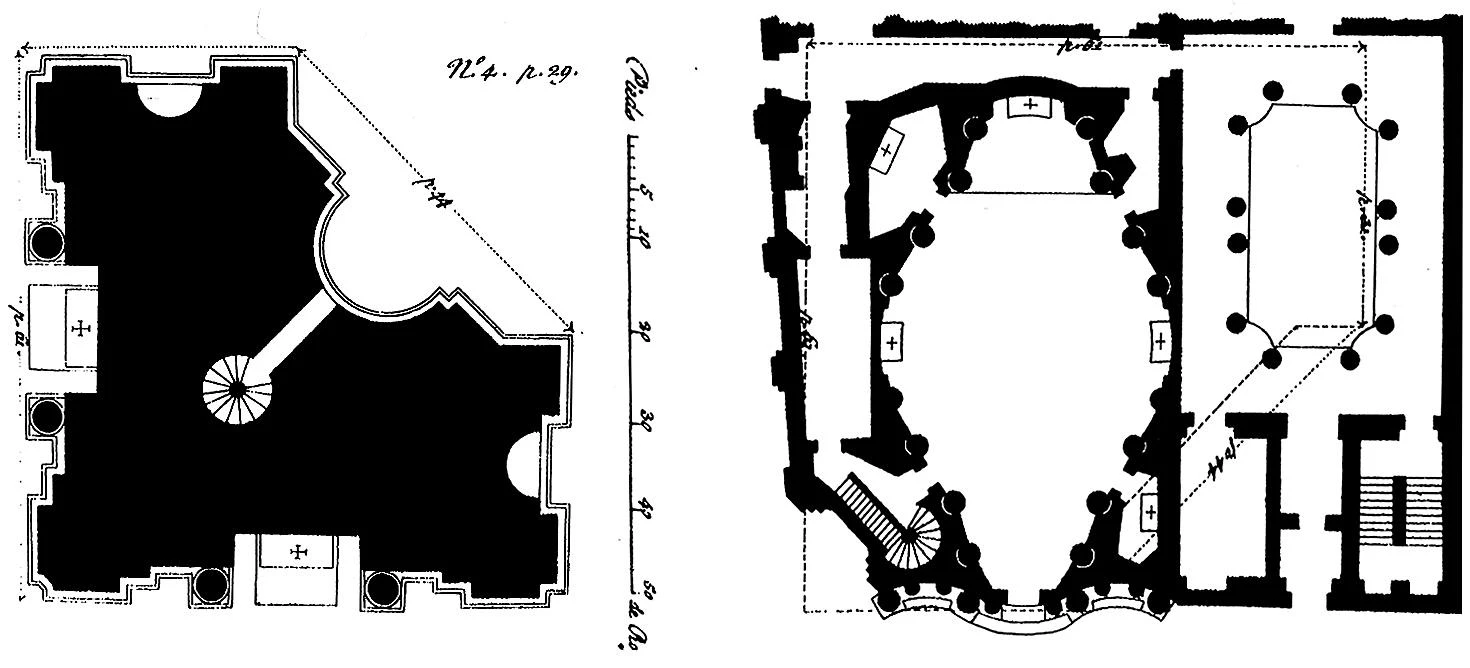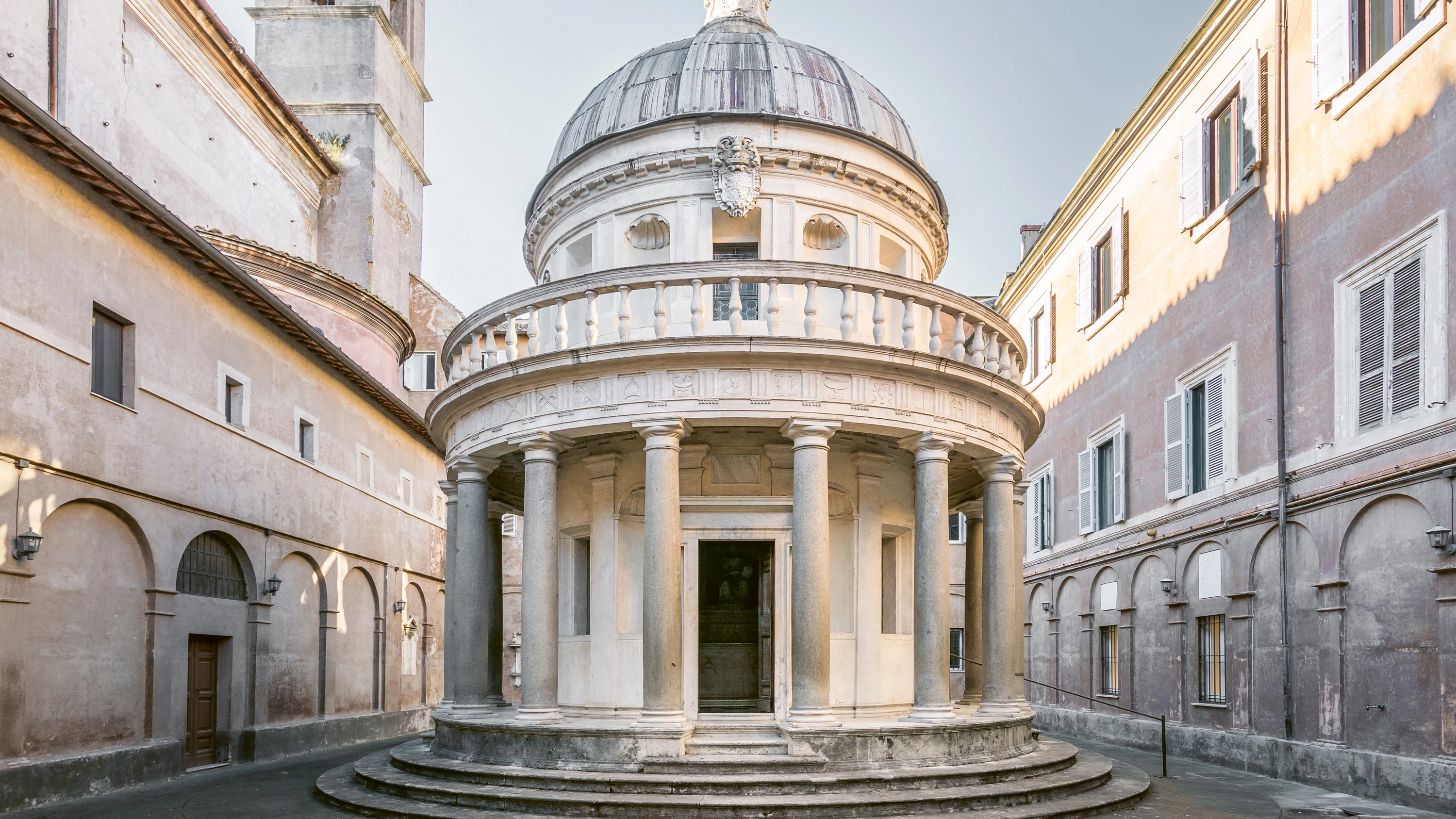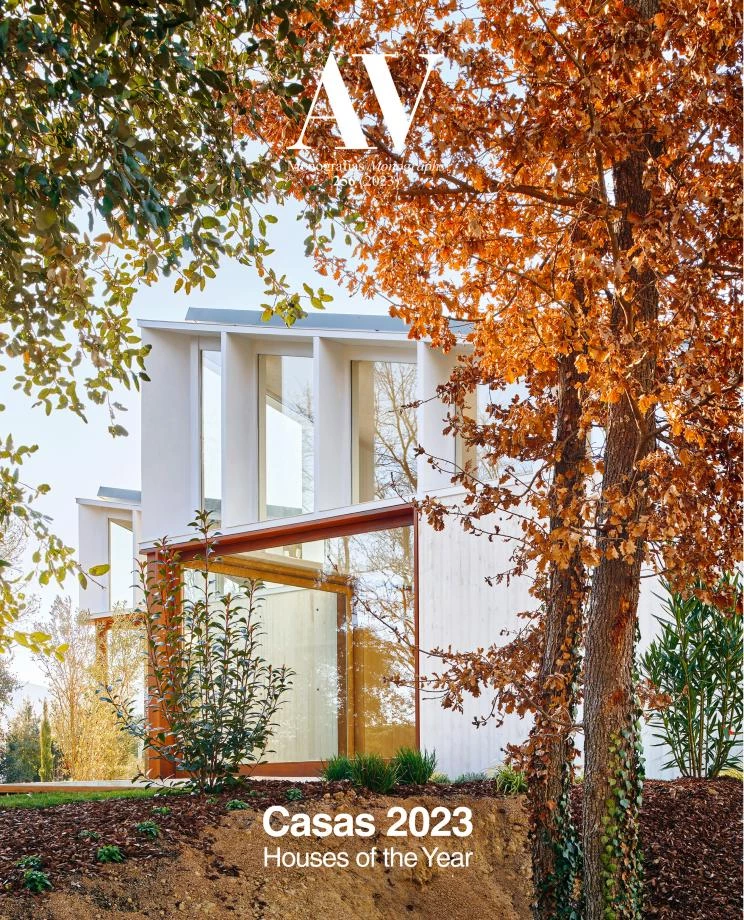
San Pietro in Montorio Pavillion. depositphotos © image by e55evu
Architects are dimensional beings, attentive always to the size of things. Students used to be advised to carry a measuring tape to check the height of a step, the width of a door or the depth of a frame, and several generations were trained in design with the help of the thick book of Ernst Neufert, who documented with drawings and measures the dimensional universe of architecture, from the ergonomics of furniture to the grand scale of the stadium, the hospital or the airport. The house occupies an intermediate place between the chair and the auditorium, but that does not exclude a great variety of sizes, which go from the minimum shelter of the cabin to the large palatial mansion, and in every scale genuine architecture can be found. Nikolaus Pevsner famously wrote “a bicycle shed is a building; Lincoln Cathedral is a piece of architecture,” but we admire the cabagnon of Le Corbusier or the Essential Homes of Foster as much as Palladian villas or Lutyens’ houses.
The scale of architecture is not a secondary issue, and must be kept well in mind before making critical judgements. In the field of painting, Oscar Tusquets suggested that the reproduction of canvases in art books should be in proportion to their real dimension, because it is difficult to understand works without knowing their size, and the same goes for buildings. Bramante’s tempietto of San Pietro in Montorio and St. Peter’s Basilica are both sublime architectures, but the dimensional difference underlined by the diminutive cannot be ignored; the nave and the cloister of San Carlo alle Quattro Fontane takes up in plan not much more than a column of St. Peter’s – which explains why this work of Borromini is known as San Carlino –, and again the difference in scale between the two Rome constructions does not distance them in quality or architectural merit: size matters, but the interest of the project is in every sense independent from the dimension of the work.
In 1995 Rem Koolhaas published with Bruce Mau a manifesto-book where his work was organized by size under the title S,M,L,XL, and this use of scale as taxonomic artifice was put into question in the year 2000 when he used his project for the Y2K House in the competition for the Casa da Música in Porto – a colossal blow-up worthy of comparison with the mythical Eames documentary, Powers of Ten –, and the success of the work completed shows the autonomy of form that inevitably – and also surreally – nuances the hierarchy of dimension. Particle physics and cosmology – the science of the very small and the science of the very big – are intimately linked, and perhaps minimal architecture might offer useful lessons for maximum constructions, even while their sizes may be so different, and architects’ concern with dimension, proportion, and measure might be fertilized with the random analogies of form and the necessary homologies of function.

Left: pillar section from St. Peter's Basilica, Città del Vaticano. Right: San Carlo alle Quattro Fontane, Rome






